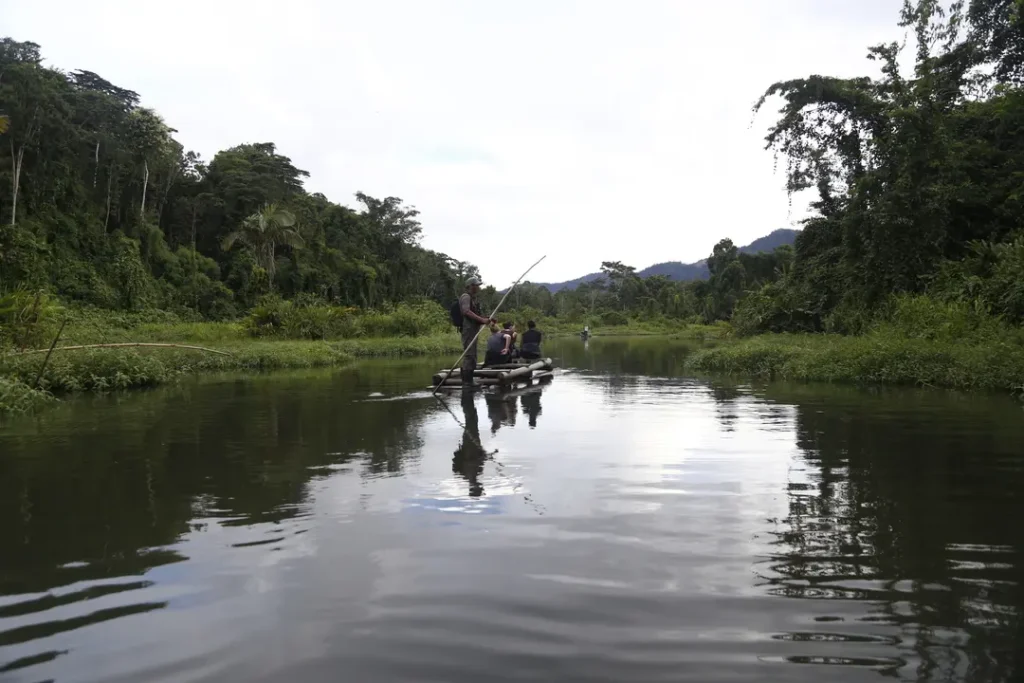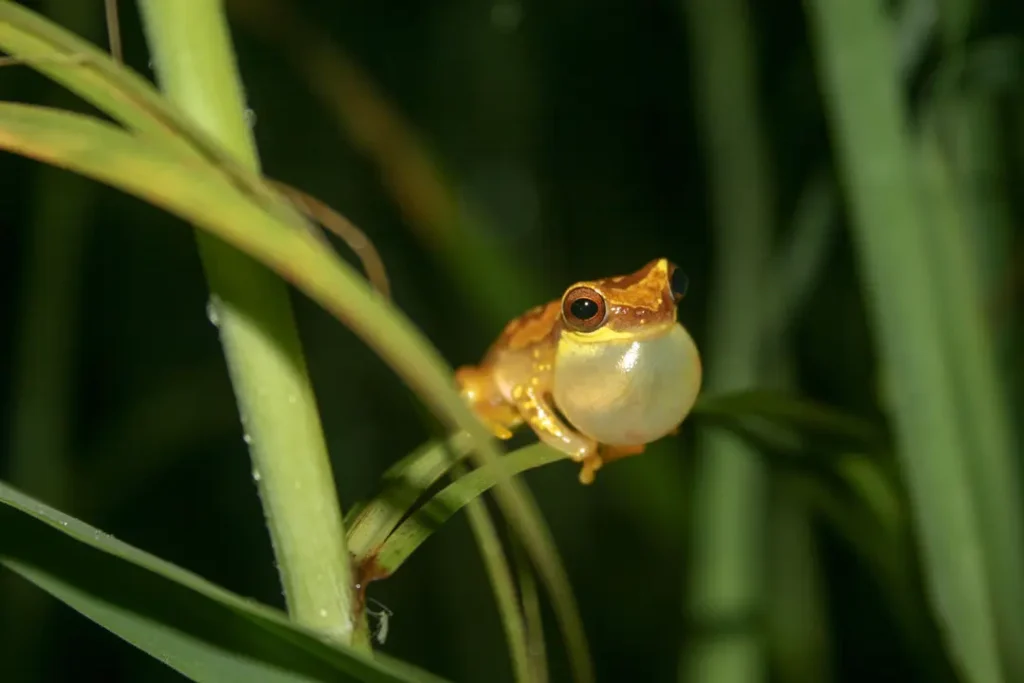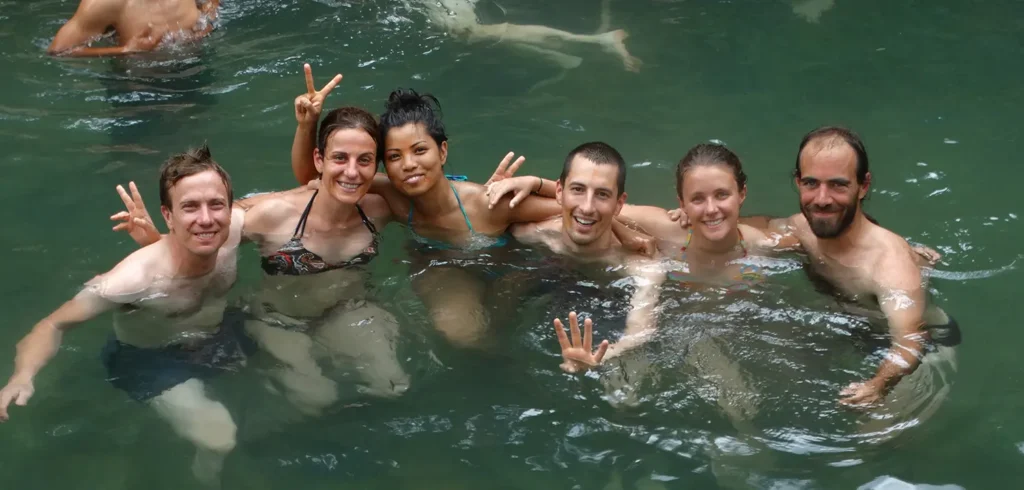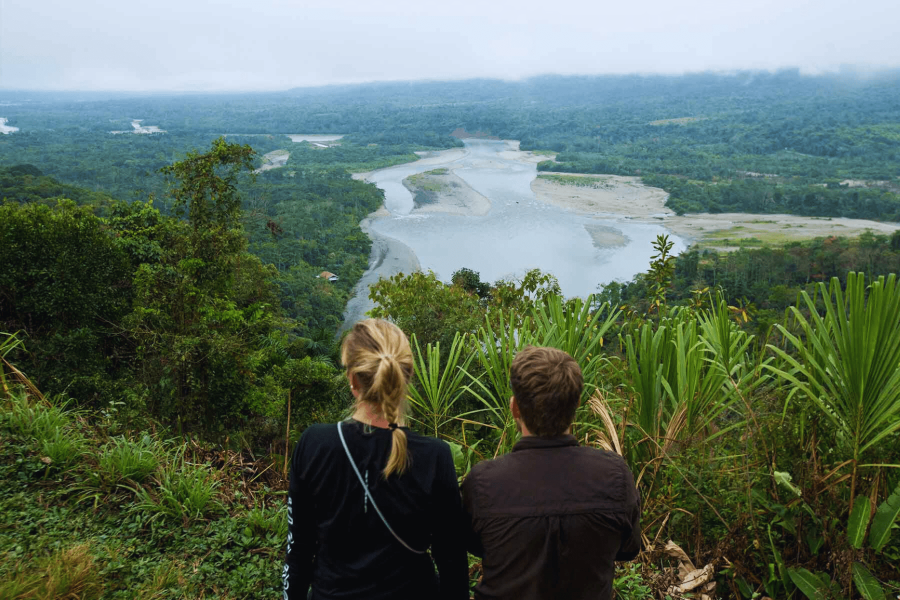Traveling to Manu with your family is an unforgettable adventure. The Manu National Park, located in southeastern Peru (regions of Cusco and Madre de Dios), is a vast Amazon rainforest that has been declared a Biosphere Reserve and World Heritage Site by UNESCO. Covering more than 1.9 million hectares, the park includes altitudes ranging from 300 meters in the lowland jungle to over 4,000 meters in the Andes. On this family trip to Manu National Park, you’ll experience unique landscapes (lowland jungle, cloud forest, and mountains) and learn about the incredible Amazonian biodiversity. Children and adults alike will enjoy spotting colorful birds, playful monkeys, and amazing animals, while discovering the traditions of local communities. Below, we provide everything you need to know to plan your family jungle excursion to Manu, so you can be well prepared.
Manu National Park
Manu National Park is one of the largest and most biodiverse protected areas on the planet. It is located in southeastern Peru, spanning the departments of Cusco and Madre de Dios (provinces of Manu and Paucartambo). It was established in 1973 for conservation purposes, and in 1987 UNESCO declared it a Natural World Heritage Site. The park includes Amazonian rainforests and cloud forests that support nearly intact ecological processes. The climate varies greatly: in the high zone (above 3,000 m), it is cold and misty, while in the lowland jungle it is hot and humid. A single hectare in Manu can host up to 250 different tree species, reflecting its plant richness. Thanks to its vastness and strict protection, Manu is home to a large number of unique plants and animals.

How to Get to Manu National Park
Getting to Manu is part of the adventure. From Cusco (3,400 m), the most common route is by road. For example, tours depart early from Cusco by private bus, crossing the Andes to Paucartambo, and then descending through the cloud forest to Pilcopata. From there, travel continues by land to Puerto Atalaya (on the Madre de Dios River) and then by boat along the Manu River toward the Reserved Zone of the park. In total, the journey takes about 7–8 hours by land before boarding the boat.
Alternatively, you can depart from Puerto Maldonado (via Lima) and combine a taxi to Atalaya + boat. However, the safest and most comfortable option is to book an organized tour with the Travel Peru Agency. Authorized agencies include all land and river transportation, expert guides, and logistics, thus avoiding road difficulties and unexpected changes. This allows families to travel peacefully and without complications, learning along the way and admiring Andean and Amazonian landscapes. All of this makes the journey itself a fundamental part of the family trip to Manu National Park.

Biodiversity of Manu National Park
Manu National Park harbors one of the highest concentrations of biodiversity on Earth. Its pristine jungle is home to a stunning variety of animals and plants that inhabit different ecosystems: from rivers and lakes to treetops and forest clearings. With a little patience and the right guide, you can spot colorful birds, stealthy big cats, primates, reptiles, tropical butterflies, and lush vegetation that amazes both young and old. This natural wealth makes Manu an ideal destination for family tourism and wildlife watching.
Notable Species in Manu:
- Birds: Over 1,000 species, such as red-and-green macaws, toucans, cock-of-the-rocks, quetzals, and hummingbirds.
- Mammals: 221 species, including tapirs, giant otters, and monkeys (15 species).
- Felines: 8 species, including jaguars, pumas, ocelots, margays, and Andean cats.
- Primates: 15 species, such as the emperor tamarin, howler monkey, and woolly monkey.
- Reptiles: 155 species, including anacondas, fer-de-lance vipers, caimans, and aquatic turtles.
- Butterflies: More than 1,300 species, some with large sizes and bright colors.
- Plants: Nearly 20,000 species (trees, shrubs, orchids, bromeliads), with forests containing up to 250 tree varieties per hectare.
This list showcases the abundant wildlife of Manu. With expert guides and patience, families will be able to spot many of these animals in their natural habitat on every trail and boat ride. The Manu jungle is a true natural paradise, perfect for a family trip to Manu National Park.

Best Family Activities in Manu National Park
One of the most spectacular activities is watching macaws at the clay lick: dozens of colorful macaws feed on clay in the early morning. For children to enjoy, family-friendly tours include several safe and educational options:
- Guided jungle walks: Easy trails with guides to identify birds, butterflies, and monkeys.
- Birdwatching: Observe macaws, toucans, and hummingbirds from lookouts and natural gardens within the park.
- Boat rides on rivers and lakes: Peaceful tours in motorboats or catamarans on lakes like Cocha Salvador and Cocha Otorongo.
- Night safari: A night hike with flashlights to discover glowing frogs, giant insects, and harmless snakes.
- Visits to indigenous communities: Interact with Matsiguenka or Machiguenga villages, learning about their Amazonian traditions.
- Nature learning: Talks with guides about ecosystems, photos of flora and fauna.
All of these activities make the family trip to Manu National Park a varied, educational, and fun experience for both kids and adults.

When Is the Best Time for a Family Trip to Manu National Park?
The dry season (May to October) is generally the best time to visit Manu. During these months, there is less rainfall, rivers are lower, and roads are more accessible. In the rainy season (November to April), there can be flooding and delays. For that reason, it’s recommended to plan your family trip to Manu National Park during the dry months. However, the jungle is beautiful all year round: during the green season, vegetation is more lush and there are many insects and frogs.
Tips and Recommendations for a Family Trip to Manu National Park
To ensure a comfortable and safe adventure with children, follow these tips:
- Clothing and gear: Bring lightweight long-sleeve clothing, rain gear, rubber boots, and a hat.
- Sun and insect protection: Use water-resistant sunscreen and repellent with DEET, plus mosquito nets for sleeping.
- Health and vaccines: Consult your doctor, get a yellow fever vaccine, and bring a personal first-aid kit.
- Food and water: Pack snacks for kids, reusable bottles, and purified water.
- Logistics: Hire an experienced agency, ideal for organizing your family trip to Manu National Park without hassles.
- Safety: Listen to the guides, don’t separate from the group, teach children to respect nature.
- Travel insurance: Get a policy that covers medical evacuation, especially if traveling with young children.
- Entertainment: Bring binoculars, travel journals, and illustrated books about Amazon animals.
With these tips, your family trip to Manu National Park will be safe, educational, and filled with unique memories.
Frequently Asked Questions about a Family Trip to Manu National Park

1. What is Manu National Park and why is it important to visit it with your family?
Manu National Park is one of the most biodiverse protected natural areas on the planet, located between Cusco and Madre de Dios, in Peru. It’s ideal for families because it offers the chance to discover the tropical rainforest, observe wildlife, and learn about environmental conservation in a safe and natural setting.
2. Is it safe to travel to Manu National Park with children?
Yes, as long as you travel with an authorized agency and follow the guide’s instructions. There are family-friendly circuits available, with short hikes, boat rides, and wildlife watching that require no physical effort.
3. What type of accommodation is available inside or near Manu National Park?
There are eco-lodges and tourist shelters that offer rustic but comfortable lodging. Many are family-adapted, with private rooms, meals included, and safe areas for rest.
4. Is it necessary to have a tour guide to visit Manu National Park?
Yes, entrance to the park is only allowed through tour operators authorized by SERNANP. Guides ensure a safe, educational, and ecosystem-respectful experience.
5. What can you see in Manu National Park?
Highlights include the macaw and tapir clay licks, Lake Otorongo with its observation tower, and the Cock-of-the-Rock lek. You can also visit waterfalls, natural viewpoints, and mystical rivers.

A family trip to Manu National Park is an Amazon rainforest adventure in Peru that combines nature, education, and fun. From colorful macaws to jaguars and indigenous communities, this destination offers unique experiences for both adults and children. With expert guides and safe activities, Manu is perfect for families wanting to explore one of the most biodiverse ecosystems in the world. Book your family adventure today to one of the most biodiverse destinations on Earth.
